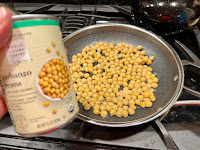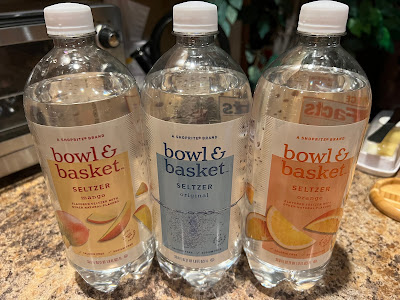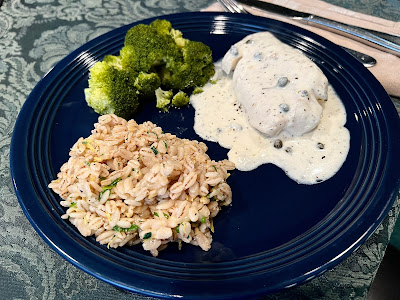THE BEST AND WORST DRINKS FOR DIABETES
By JENNIFER NADEL, MD
Dr. Jennifer Nadel is a board certified emergency medicine
physician and received her medical degree from the George Washington University
School of Medicine. She has worked in varied practice environments, including
academic urban level-one trauma centers, community hospital emergency
departments, skilled nursing facilities, telemedicine, EMS medical control, and
flight medicine.
People who have type 2
diabetes need to be aware of how drinks can affect their blood sugar
levels. Certain beverages can increase glucose. Luckily, there are plenty of
tasty drinks that people living with diabetes can enjoy.
In this article, we’ll explore the best and worst drinks for
diabetes and how to make the best choices for supporting balanced blood sugar.
Best Drinks for Diabetes
If you have type 2 diabetes,
staying hydrated can help support healthy blood glucose levels. However, some
beverages make it harder to control blood sugar. The following are the best
drinks to enjoy if you have type 2 diabetes.
Water
Proper hydration is key for a number of essential
bodily functions, including removing waste, transporting nutrients, and
cell metabolism. And when it comes to hydration, water is the best drink option
for everyone, including those who have type 2 diabetes.
Drinking enough water each day can help keep blood sugar
levels balanced. While each person’s water requirement differs based on body
weight and activity levels, the Institute
of Medicine suggests the following daily water needs:
Adults assigned male at birth: 3.08 liters (about 13 cups)
Adults assigned female at birth: 2.13 liters (about 9 cups)
Your medical provider can share specific guidance on how
many cups of water to aim for. If you dislike plain water, you can make it more
appealing by:
Adding ice
Trying filtered water versus tap water
Infusing it with citrus or cucumber slices
Adding fresh herbs like mint or basil
Herbal Tea
Herbal teas can add flavor and variety to your daily fluid
intake. Herbal teas do not contain calories or carbohydrates. Many contain
beneficial compounds, like flavonoids, that can offer health benefits.
Herbal tea options include:
Peppermint
Chamomile
Ginger
Raspberry
Hibiscus
Rooibos
Remember: Adding honey or sugar to herbal tea will affect
your blood sugar. If you do not like plain herbal tea, consider boosting the
flavor with freshly squeezed lemon juice or a sugar-free sweetener.
Unsweetened Iced Tea
People who have type 2 diabetes can enjoy black and green
teas. Research has
found that green tea in particular is rich in flavonoids and may reduce the
risk of type 2 diabetes.
If you want to add more flavor to unsweetened tea without
adding sugar, try lemon or other fruit infusions.
Unsweetened Black Coffee
Caffeinated black coffee is not necessarily bad for blood
sugar. Research has associated the unsweetened beverage with
a reduced risk of type 2 diabetes and improved long-term management of blood
sugar responses in the body. However, adding sugar or milk may disrupt blood
sugar balance.
Sugar-Free Sparkling Water
Seltzer water or sparkling water can make daily hydration
more interesting. Many brands and flavors of sparkling water contain no added
sugar or sweeteners, making them a good option for supporting daily hydration. They are
also a good swap for soda or other carbonated drinks.
When selecting sparkling water, read the labels. Look for
beverages that contain no calories or added sugars or sweeteners. You can also add citrus
slices and fruit infusions to sparkling water to create an even richer flavor.
Worst Drinks for Diabetes
When managing type 2 diabetes,
some drinks are a lot worse than others for causing glucose problems.
Fruit Juice
While drinks that contain 100% juice may offer some
nutritional value (such as vitamin C), it’s best to consume whole fruit. Fruit
juice contains all the carbohydrates but little of the fiber that’s naturally
found in fruit. This can lead to blood sugar spikes.
If you are going to drink fruit juice, choose one with no
added sugars and limit your intake to a half-cup (4 ounces). You can also add a
few tablespoons of 100% fruit juice to plain or sparkling water, which
minimizes added sugars while giving some of the desired flavor.
Soda
Most people who are managing type 2 diabetes know that soda
can be problematic. One 12-ounce sugar-sweetened
soda drink can contain more than 40 grams of sugars and 150 calories.
If someone consumes soda from a restaurant, the cup size is usually 16 or 20
ounces, which only increases the amount of sugars consumed.
While diet soda doesn’t contain sugar, research does not
definitely rule out any association with
diabetes. If you are going to occasionally consume soda, diet soda is better
for blood sugar control. But water, sparkling water, herbal teas, and black
coffee are the best beverage choices for people who have type 2 diabetes.
Sweet Tea
Unsweetened black or green tea are good options for people
who have type 2 diabetes. However, sweet tea contains as much or more sugar
than regular soda: A 20-ounce bottle contains about 55 grams. Sugar-sweetened
beverages are associated with a higher risk for type 2 diabetes and
more problems with controlling blood sugar levels.
Energy Drinks
Energy drinks are typically high in carbohydrates and
sugars, which can lead to blood sugar disruptions. In some cases, people are
accustomed to consuming 2-3 energy
drinks per day, which can lead to significant increases in blood sugar
levels, blood pressure, and body weight.
Alcohol
Alcohol can lead to problems controlling blood sugar because
it initially may lead to a decrease in glucose levels, but eventually could
contribute to insulin resistance or overall health
issues that are associated with type 2 diabetes, like obesity, heart
problems, or high
blood pressure. Some alcohol beverages also contain added sugars.
Additionally, some research has linked regular elevated intakes of alcohol with
an increased risk for prediabetes.
The American Diabetes Association suggests that people who
have type 2 diabetes consume limited amounts of alcohol. That means two drinks
or less per day for people assigned male at birth, and one drink or less for
people assigned female at birth. Your medical provider may recommend less than
this, especially if you consume medication
that could interact with alcohol or you have other health-related
factors that may be worsened by alcohol intake.
Bottom Line
If you have type 2 diabetes, you do not only have to drink
plain water. There are many flavorful options for healthy drinks. Avoiding
beverages that contain added sugars is an important part of managing blood
sugar.
K Health articles are all written and reviewed by MDs, PhDs,
NPs, or PharmDs and are for informational purposes only. This information does
not constitute and should not be relied on for professional medical advice.
Always talk to your doctor about the risks and benefits of any treatment.
---------------------------------------------------------------------
This second article focuses on a favorite of mine... carbonated water. There are many carbonated beverages out there... some, like quite a few sparkling waters, are loaded with artificial sweeteners... Always read labels when you make your choices. :-)
Carbonated (Sparkling) Water: Good or Bad?
By Franziska Spritzler — Updated on February 24, 2023 at Healthline.com
Many people question if this beverage may have a negative
impact on your dental, digestive, or bone health. However, it’s often
co nsidered to be a healthy way to stay hydrated.
Carbonated water is a refreshing beverage and good
alternative to sugary soft drinks. However, some people are concerned that it may be bad for
your health. This article takes a detailed look at the health effects of
carbonated water.
What is carbonated water?
Carbonated water is water that
has been infused with carbon dioxide gas under pressure. This produces a bubbly drink that’s also known as sparkling
water, club soda, soda water, seltzer water, and fizzy water.
Apart from seltzer water, carbonated waters usually have
salt added to improve their taste. Sometimes small amounts of other minerals
are included.
Natural sparkling mineral waters, such as Perrier and San
Pellegrino, are different. These waters are captured from a mineral spring and tend to
contain minerals and sulfur compounds. They are often carbonated as well.
Tonic water is a form of carbonated water that contains a
bitter compound called quinine, along with sugar or high-fructose
corn syrup.
SUMMARY
Carbonated water combines water and carbon dioxide under
pressure. Sodium and other minerals are often added.
Carbonated water is acidic
Carbon dioxide and water react chemically to produce
carbonic acid, a weak acid that’s been shown to stimulate the same nerve
receptors in your mouth as mustard. This triggers a burning, prickly sensation that can be both
irritating and enjoyable.
The pH of carbonated water is 3–4, which means it’s slightly
acidic. However, drinking an acidic beverage like carbonated water
does not make your body more acidic. Your kidneys and lungs remove excess carbon dioxide. This
keeps your blood at a slightly
alkaline pH of 7.35–7.45 regardless of what you eat or drink.
SUMMARY
Carbonated water is acidic, but your body should maintain a
stable, slightly alkaline pH no matter what you consume.
Does it affect dental health?
One of the biggest concerns about sparkling water is its
effect on teeth, as your enamel is directly exposed to acid.
There is very little research on this topic, but one study
found that sparkling mineral water damaged enamel only slightly more than still
water. Furthermore, mineral water was 100 times less damaging than a sugary soft drink.
In one study, carbonated beverages showed strong potential
to destroy enamel — but only if they contained sugar. In fact, a non-carbonated sweet beverage (Gatorade) was more
harmful than a carbonated sugar-free drink (Diet Coke) (Trusted
Source).
Another study placed samples of tooth enamel in various
beverages for up to 24 hours. The sugar-sweetened carbonated and non-carbonated
beverages resulted in significantly greater enamel loss than their diet
counterparts (5Trusted Source).
A review of several studies found that the combination
of sugar and
carbonation may lead to severe dental decay (6Trusted
Source).
However, plain sparkling water appears to pose little risk
to dental health. Only the sugary types are harmful (7Trusted
Source).
If you’re concerned about dental health, try drinking
sparkling water with a meal or rinsing your mouth with plain water after
drinking it.
SUMMARY
Sugar-sweetened carbonated beverages can erode tooth enamel,
but plain carbonated water appears relatively harmless.
Does it affect digestion?
Carbonated water may benefit
your digestive health in several ways.
Can improve swallowing ability
Studies suggest that sparkling water may improve swallowing
ability in both young and older adults (8Trusted
Source, 9Trusted Source, 10Trusted
Source).
In one study, 16 healthy people were asked to repeatedly
swallow different liquids. Carbonated water showed the strongest ability to
stimulate the nerves responsible for swallowing (9Trusted
Source).
Another study showed that the combination of cold
temperature and carbonation strengthened these beneficial effects (10Trusted
Source).
In a study in 72 people who felt a persistent need to clear
their throats, drinking ice-cold carbonated water led to improvements in 63% of
participants. Those with the most frequent, severe symptoms experienced the
greatest relief (11Trusted Source).
May increase feelings of fullness
Carbonated water may also extend feelings of fullness after
meals to a greater extent than plain water.
Sparkling water may help food remain in your stomach longer,
which can trigger a greater sensation of fullness (12Trusted
Source).
In a controlled study in 19 healthy young women, fullness
scores were higher after the participants drank 8 ounces (250 ml) of soda
water, compared with after drinking still water (13Trusted
Source).
However, larger studies are needed to confirm these results.
May help relieve constipation
People who experience constipation may
find that drinking sparkling water helps relieve their symptoms.
In a 2-week study in 40 older individuals who had
experienced a stroke, average bowel movement frequency nearly doubled in the
group that drank carbonated water, compared with the group that drank tap
water.
What’s more, participants reported a 58% decrease in
constipation symptoms (14Trusted Source).
There’s also evidence that sparkling water may improve other
symptoms of indigestion, including stomach
pain.
One controlled study examined 21 people with chronic
digestive issues. After 15 days, those who drank carbonated water experienced
significant improvements in digestive symptoms, constipation, and gallbladder
emptying (15Trusted
Source).
SUMMARY
Carbonated water has benefits for digestion. It may improve
swallowing, increase feelings of fullness, and reduce constipation.
Does carbonated water affect bone
health?
Many people believe that carbonated beverages are bad for
bones because of their high acid content. However, research suggests the
carbonation isn’t to blame.
A large observational study in over 2,500 people found that
cola was the only beverage associated with significantly lower bone mineral
density. Carbonated water appeared to have no effect on bone health (16Trusted
Source).
Unlike carbonated water and clear soda, cola drinks contain
a lot of phosphorus.
The researchers proposed that the cola drinkers may have
been consuming too much phosphorus and insufficient calcium,
providing a potential risk factor for bone loss.
In another study, teen girls who consumed carbonated drinks
were found to have lower bone mineral density. This was attributed to beverages
that replaced milk in their diet, resulting in inadequate calcium intake (17Trusted
Source).
In a controlled study in 18 postmenopausal women, drinking
34 ounces (1 liter) of sodium-rich sparkling water daily for 8 weeks led to
better calcium retention than drinking plain mineral water (18Trusted
Source).
Additionally, no negative effects on bone health were
observed in the sparkling water group.
Animal research suggests carbonated water may even improve
bone health.
Supplementing hens’ diets with carbonated water for 6 weeks
led to increased leg bone strength compared with tap water (19Trusted
Source).
SUMMARY
Drinking carbonated cola drinks may harm bone health, but
plain sparkling water appears to have a neutral or positive effect.
Does it affect heart health?
Research suggests carbonated water may improve heart health,
although the evidence is very limited.
One study in 18 postmenopausal women showed that drinking
sodium-rich carbonated water decreased LDL (bad) cholesterol, inflammatory markers,
and blood sugar.
What’s more, they also experienced an increase in HDL (good)
cholesterol (20Trusted Source).
Additionally, the estimated risk of developing heart disease
within 10 years was 35% lower among those drinking carbonated water than those
drinking the control water.
However, since this was only one small study, significantly
more research is needed before any conclusions can be reached.
SUMMARY
Carbonated water may have beneficial effects on your
cholesterol, inflammation, and blood sugar levels, potentially reducing your
risk of heart disease. However, more studies are necessary.
The bottom line
No evidence suggests that carbonated
or sparkling water is bad for you.
It’s not that harmful to dental health, and it seems to have
no effect on bone health.
Interestingly, a carbonated drink may even enhance digestion
by improving swallowing ability and reducing constipation.
It’s also a calorie-free beverage that causes a pleasurable
bubbly sensation. Many people prefer it over still water.
There’s no reason to give up this beverage if you enjoy it.
In fact, it may even improve your overall health.
-----------------------------------------------------------------
Have a great week, everyone, and thank you for your support!
Blessed be… and happy cooking!
Chef Michael R





















































